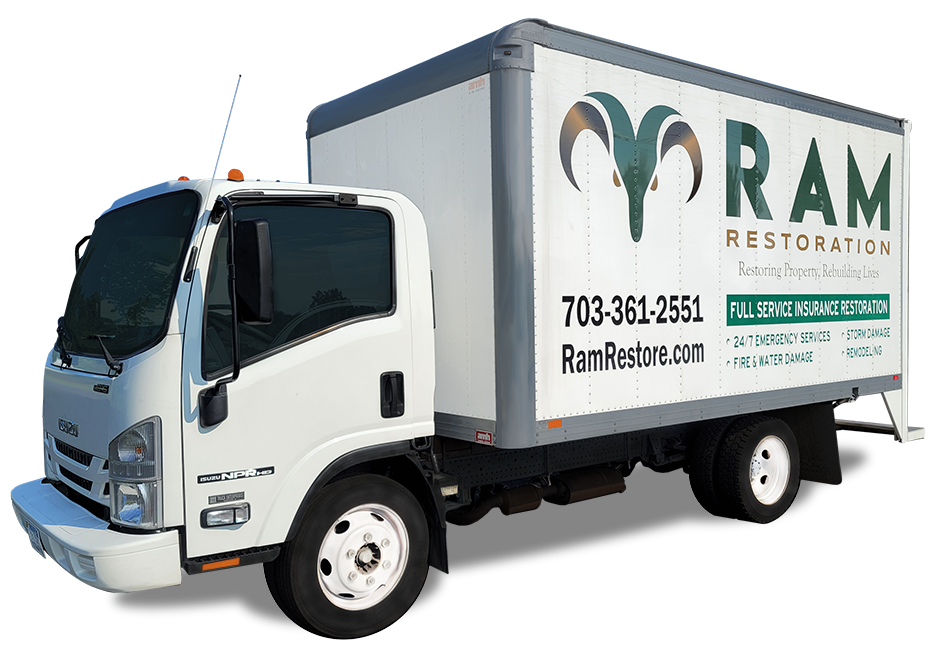As a homeowner, it is essential to understand the risks associated with fires and the steps you can take to prevent them. From cooking mishaps to electrical malfunctions, there are many potential causes of fire damage in your home. However, with proper prevention measures, you can minimize the risk of fire accidents and create a safer living environment for you and your family.
In this section, we will discuss some essential fire damage prevention tips that every homeowner should know. By following these guidelines, you can significantly reduce the risk of fire damage and protect your home from potential disasters.
One of the most crucial aspects of fire damage prevention is staying vigilant and taking the necessary precautions. With this in mind, let’s explore some critical fire damage prevention tips to help you safeguard your home and loved ones.
Key Takeaways:
- Understanding common fire hazards is essential for preventing fire damage.
- Proper smoke alarm installation and maintenance can save lives by detecting fires early.
- The kitchen is a common area where fires can start, so implementing fire-safe practices is crucial.
- Having a well-designed fire escape plan can ensure quick and safe evacuation in case of a fire.
- Safeguarding electrical systems and appliances is necessary to minimize fire risks.
Understanding Common Fire Hazards
Before you can effectively prevent fire damage, it is essential to understand the common fire hazards that can put your home at risk. By being aware of these potential dangers, you can take proactive steps to minimize your risk of a fire accident.
Some of the most common fire hazards in homes include:
- Electrical issues: Faulty wiring, overloaded circuits, and damaged electrical cords can all lead to fires. Be sure to have a qualified electrician inspect and maintain your home’s electrical system regularly.
- Cooking accidents: Unattended cooking, grease spills, and improperly stored flammable materials are common causes of kitchen fires. Always stay in the kitchen while cooking, keep flammable materials away from heat sources, and clean your stovetop and oven regularly.
- Heating sources: Space heaters, fireplaces, and wood stoves can all pose fire hazards if not used properly. Keep flammable materials at least three feet away from heating sources, and never leave them unattended.
- Smoking: Careless smoking is a frequent cause of home fires. Always smoke outside, use deep ashtrays, and never smoke in bed.
- Candles: Lit candles can quickly ignite nearby flammable materials, such as curtains or bedding. Always keep candles at least one foot away from flammable materials, and never leave them unattended.
- Children: Children can accidentally start fires by playing with matches, lighters, or other heat sources. Keep these items out of reach, and teach children about fire safety.
- Appliances: Malfunctioning or improperly used appliances can also cause fires. Follow manufacturer instructions for use and maintenance, and never leave appliances unattended while in use.
Understanding these hazards and taking steps to minimize or eliminate them can go a long way in preventing fire damage to your home.
Ensuring Proper Smoke Alarm Installation and Maintenance
Smoke alarms are an essential safety feature in preventing fire-related accidents in your home. Proper installation and regular maintenance can ensure that these alarms are functioning correctly and can alert you to potential danger early on.
Smoke Alarm Installation
When installing smoke alarms, placement is key. Be sure to install them in every bedroom, outside each sleeping area, and on every level of your home, including the basement. Place smoke alarms high on walls or ceilings, as smoke rises and will reach the alarms faster.
If you have a large home, consider installing interconnected smoke alarms. This means that when one alarm goes off, all the alarms in the house will also sound, providing maximum warning and safety.
It is also important to use the right type of smoke alarm. There are two types: ionization and photoelectric. Ionization smoke alarms respond better to flaming fires, while photoelectric smoke alarms are more responsive to smoldering fires. Experts recommend having both types or a dual-sensor smoke alarm that combines both technologies.
Smoke Alarm Maintenance
Smoke alarms require regular maintenance to ensure they are functioning correctly. Here are some simple steps you can take:
- Test your smoke alarms at least once a month by pressing the test button.
- Replace smoke alarms every ten years or sooner if they are not functioning correctly.
- Change the batteries in your smoke alarms at least once a year, or when the low-battery warning chirps.
- Clean your smoke alarms regularly to remove dust and debris that can interfere with their proper functioning.
By following these tips, you can ensure that your smoke alarms are always in optimal condition and ready to alert you to potential fire hazards.
Remember, smoke alarms are a critical component of fire safety in the home. Don’t ignore the importance of proper installation and maintenance. By taking these simple steps, you can help safeguard your home and family from potential fire hazards.
Implementing Fire-Safe Practices in the Kitchen
The kitchen is one of the most common areas in the home where fires can start. To prevent kitchen fires, it is essential to take fire-safe practices seriously and implement them in your daily routine. By following these tips, you can significantly reduce the risk of kitchen fires and protect your home and loved ones.
Proper Cooking Practices
Cooking is an everyday activity in most households. However, it can also be a significant source of fire hazards if not done correctly. To ensure fire safety while cooking, keep these practices in mind:
- Never leave cooking food unattended. If you need to leave the kitchen, turn off the stove or oven.
- Avoid wearing loose-fitting clothing that can catch fire from the stove or oven.
- Keep flammable items such as oven mitts, dish towels, and curtains away from the stove.
- When using a fryer, make sure to keep it away from walls and other combustible items.
Safe Use of Appliances
Appliances have made cooking more accessible and more convenient. However, they can also pose a significant fire hazard. Follow these tips to use appliances safely:
- Unplug appliances when not in use.
- Regularly clean appliances to remove grease and other flammable residue.
- Do not overload electrical outlets or extension cords, and never use frayed cords.
- Do not use appliances with damaged cords or plugs and replace them immediately.
Maintenance of Flammable Materials
Many of the materials we use in the kitchen can pose a fire hazard if not appropriately stored and maintained. Follow these guidelines to maintain the flammable materials in your kitchen:
- Store flammable liquids such as oil, gasoline, and cleaning supplies away from heat sources and in a cool, dry place.
- Dispose of oil and grease properly by letting it cool before throwing it away in a metal container.
- Regularly clean kitchen exhaust fans and ducts to prevent the buildup of grease and other flammable residue.
By implementing these fire-safe practices in your kitchen, you can significantly reduce the risk of kitchen fires and protect your home and loved ones. Remember to stay vigilant and keep fire prevention a top priority in your daily routine.
Creating an Effective Fire Escape Plan
Creating a fire escape plan is essential for ensuring the safety of your family in the event of a fire. Below are some steps you can take to create an effective fire escape plan:
- Draw a map of your home: Start by drawing a map of your home, including all the doors, windows, and potential escape routes from each room.
- Identify two escape routes from each room: In case one is blocked, it’s important to have a backup escape route. Also, make sure that all windows and doors are easy to open, and keep any necessary tools nearby to assist with opening them.
- Choose a meeting spot outside: Choose a spot outside, a safe distance from your home, where everyone can gather after escaping. This spot should be easy to find and remember.
- Practice the escape plan with your family: Once you have created a fire escape plan, make sure to practice it with your family. Conducting fire drills regularly will ensure that everyone knows what to do in case of a fire.
It’s important to remember that during a fire, time is of the essence. Make sure everyone in your home is familiar with the fire escape plan and knows what to do in case of an emergency.
Safeguarding Electrical Systems and Appliances
Electrical systems and appliances are an essential part of modern living, but they can also pose significant fire hazards if not appropriately maintained. To ensure electrical system safety and minimize fire risks, follow these appliance maintenance tips:
- Regularly inspect all electrical cords and replace them if worn or damaged. Frayed cords can cause sparks and start fires.
- Unplug small appliances when not in use. Some appliances, such as toasters and coffee makers, remain warm even when turned off, and can ignite nearby items.
- Do not overload electrical outlets or extension cords. Overloading can cause overheating, which can lead to sparks and fires.
- Have a licensed electrician inspect your home’s electrical system periodically. They can identify potentially dangerous conditions and make recommendations for repairs or upgrades.
In addition to these general guidelines, here are some appliance-specific maintenance tips:
| Appliance | Appliance Maintenance Tips |
|---|---|
| Dryers | Remove lint from the filter after each use to prevent buildup and potential ignition. |
| Ovens and Stovetops | Clean up any spilled grease or food as soon as it occurs to prevent flare-ups. Regularly inspect and clean your oven’s heating elements and replace if needed. |
| Space Heaters | Place space heaters at least three feet away from any combustible materials, such as curtains or bedding. Never leave space heaters unattended. |
By following these appliance maintenance and electrical system safety tips, you can help protect your home from fire damage and ensure a safer living environment for you and your family.
Conclusion
By implementing the fire damage prevention tips discussed in this article, you can significantly reduce the risk of fire accidents and protect your home and loved ones. Remember to prioritize safety and make fire prevention a top priority in your daily routines. Stay vigilant, and together we can create a safer living environment.
FAQ
What are some essential fire damage prevention tips for a safer home?
Implementing fire-safe practices in the kitchen, ensuring proper smoke alarm installation and maintenance, safeguarding electrical systems and appliances, creating an effective fire escape plan, and understanding common fire hazards are all essential for preventing fire damage and creating a safer living environment.
What are some common fire hazards that homeowners should be aware of?
Common fire hazards include faulty electrical wiring, flammable materials stored improperly, unattended candles, overloaded power outlets, and improper use of cooking appliances. Understanding these hazards can help homeowners take necessary precautions to minimize the risk of fire accidents.
How important is proper smoke alarm installation and maintenance?
Smoke alarms are crucial for early fire detection and can save lives. It is important to install smoke alarms in the right locations, such as near bedrooms and on every level of the house. Regularly maintaining smoke alarms, including testing the batteries and ensuring they are in working order, is essential for optimal functionality.
What fire-safe practices should be followed in the kitchen?
To prevent kitchen fires, it is important to practice safe cooking habits, such as never leaving cooking unattended and keeping flammable items away from heat sources. Additionally, maintaining kitchen appliances, such as stoves and ovens, regularly and properly storing flammable materials can help minimize the risk of fires in the kitchen.
How can I create an effective fire escape plan?
Creating a fire escape plan involves identifying multiple escape routes from each room, determining a safe meeting point outside the home, and practicing fire drills with your family. It is important to ensure that everyone knows how to evacuate safely in case of a fire emergency.
How can I safeguard my electrical systems and appliances?
To minimize fire risks related to electrical systems and appliances, it is important to conduct regular inspections, ensure wiring is up to code, avoid overloading power outlets, and maintain appliances according to manufacturer’s recommendations. Taking these precautions can help prevent electrical malfunctions that may lead to fires.







